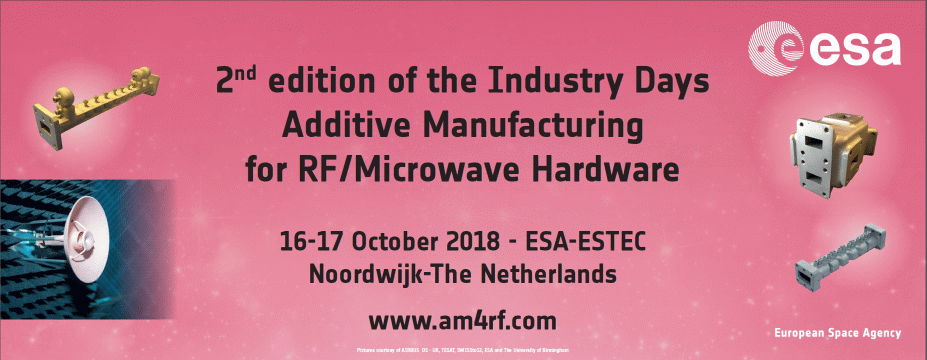Speakers
Mr
EDUARDO LAPEÑA
(TRYO AEROSPACE)Mr
ESTEBAN CELEMIN
(TRYO AEROSPACE)Mr
MIGUEL ESTERAS
(TRYO AEROSPACE)
Description
The aim of this project has been to identify the potential benefits of the use of metal 3D printing on the S-Band Helix Antenna. In order to assess the benefits, the most complex piece of the antenna, the radiating element, that was previously manufactured by conventional methods like turning, milling and spark erosion has been substituted by a 3D printed aluminum one. The design phase included the RF, mechanical, thermal and manufacturing iterations, and due to the new manufacturing concept the radiating design was optimized in terms of additive engineering.
The behavior of the aluminium AlSi10Mg was ensured by tensile test, heat treatment, density, metallography, Xray, Xct inspection, OM inspection and roughness. This process was repeated over several batches just to define the best orientation and geometry. The initial mechanical hypotheses were confirmed after the manufacturing test results. The manufacturing was not only centered in the product, but in the process too like powder control, printing monitoring, or parameters definition.
The verification has been performed through the manufacturing of an Engineering Qualification Model EQM, that has been fully tested. The RF campaign was composed of radiation pattern and polarization measurement in anechoic chamber, and return loss and frequency measurements. The results before and after environmental test showed a very accurate values with respect to the design ones. The vibration test were composed of sine, random and shock test at EQM level and durations, obtaining satisfactory results.
The good agreement between simulations and test results, together with the satisfactory environmental test campaign surpassed have demonstrated the possibility to substitute the helix radiating element from conventional manufacturing methods by metal 3D printing . And additional flight unit has been manufactured and fully tested showing similar results to the EQM one, providing supporting evidences of the good repeatability of the metal 3D printing method developed
Topics: S-band helix antenna, additive manufacturing, qualification campaign, AlSi10Mg,
Why your contribution is relevant for the event?
Because the aims intended at the beginning of the programa have been achieved, providing an useful information for the end users:
The main objetives achieved have been
a) Re-design the helix to optimize the metallic 3D printing process but maintaining the performances.
b) Define the type and number of samples during manufacturing process to guarantee mechanical properties.
c) Define a procedure to guarantee repeatability acceptable between different units.
d) Define the thermal treatments to guarantee the required mechanical properties and dimensional tolerances.
e) Define a test campaign that guarantees that the antenna is valid for flight use.
Primary authors
Mr
EDUARDO LAPEÑA
(TRYO AEROSPACE)
Mr
ESTEBAN CELEMIN
(TRYO AEROSPACE)
Mr
MIGUEL ESTERAS
(TRYO AEROSPACE)

